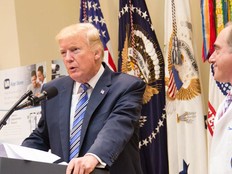The Technology that Powers Federal BYOD Programs [#Infographic]
Bring your own device (BYOD) and telework, two of the hottest trends in government IT, are changing the way federal employees work and forcing agencies to rethink their infrastructure. Both rely on a host of technologies and policies, and BYOD, in particular, is radically shifting the way IT is approached and delivered.
Cloud computing, for example, enables workers to access their data anywhere, anytime. Mobile device management (MDM) software allows IT to keep devices safe if they are lost or stolen. And virtual desktop infrastructure provides a secure portal to network resources.
As Robert Hughes, CIO of the Treasury Department’s Alcohol and Tobacco Tax and Trade Bureau told FedTech, “no one size fits all when it comes to implementing BYOD.” It takes multiple pieces of hardware and software working together to power a safe BYOD program.
Additionally, policies that dictate everything from which apps are allowed to who pays for the device and data are crucial to both IT and the users. In its BYOD tool kit, the White House outlines example policies that can help any agency begin or improve its program.
Despite the complexities, BYOD is proving to be extremely popular. In fact, according to the infographic below, 57 percent of federal employees said they would consider paying to have their personal device secured so they could use it for work. In addition, 58 percent of government IT workers believe that BYOD is improving productivity. Agencies are benefitting, too. To support BYOD, the GSA moved to cloud-based e-mail, saving $15.2 million over five years. The Alcohol and Tobacco Tax and Trade Bureau implemented a virtual desktop infrastructure, pumping $1.2 million back into its budget.
The infographic highlights some of the most important technology behind the revolutionary BYOD movement.









